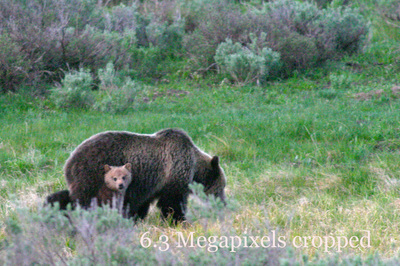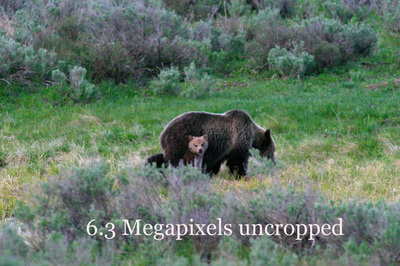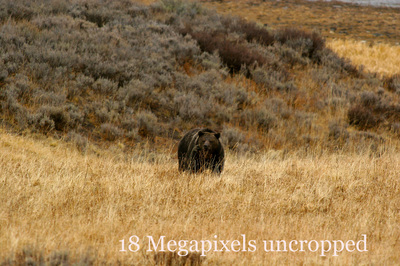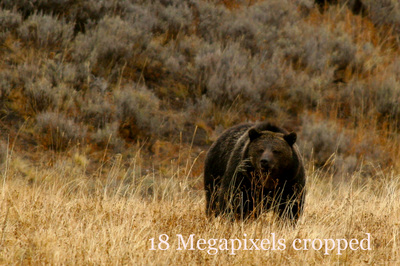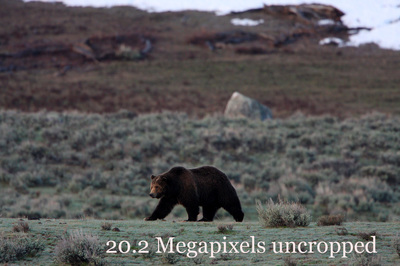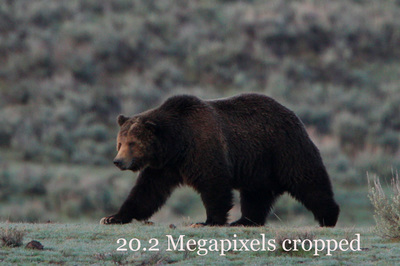Archived
Going Digital
|
Dave Taylor’s Nature Photo Blog
More people are getting involved in photographing nature than ever before thanks to the arrival of digital cameras. My first foray into the digital world was in 2004 with a Canon D10. It had a whopping 6.3 megapixel sensor! Now that might not mean much to most people today but to a photographer who grew up using Kodachrome 64 it meant a lot…none of it very positive. Kodachrome 64 slides would compare in quality to images taken with a 12 megapixel camera (in my opinion). In other words the Canon 10D was about half as good at my film cameras. So armed with both film cameras and the 10D I set off to Yellowstone in the spring of 2005. I will confess that the 10D was relegated to a secondary role and was used rarely until we met the grizzly sow with two cubs. Now a grizzly with two cubs close to the road attracts a lot of attention. Picture over 100 photographers with long lenses (all shooting film) lined up along the road. Someone (not me) saw her kill an elk calf and then she disappeared in the woods. End of story? Not hardly. There was small buffalo wallow filled with water and after a kill predators like to have a drink of water. So we waited. One hour, then two, then three. The sun was going down. And as the sun went down so too did the hopes of the photographers. Kodachrome 64 has an ISO of 64. That means that it requires a lot of light to give you a good shutter speed. With my film cameras and a very fast 2.8 lens I could shoot at best at about 1/30th of a second in the dimming light…and that was optimistic. The 10D being digital came into its own that evening. Its ISO could be adjusted up to 1600. That higher ISO meant that I could shoot with my longer f5.6 lens at shutter speeds of over250th a second. So when the sow appeared only a few of us got any shooting. It was the last big trip in which I carried film cameras. Not that the 10D lasted much longer. At 1600 ISO the images were grainy and I could just barely crop them and get a useable image. However I was finally and completely convinced that digital was here to stay. The 10D was replaced with a 20D with 8.2 megapixel and by then I was fully entrapped in doing the male thing: upgrading as new technology comes along. Many years later and my DSLR cameras offer 20.2 megapixels. And in 2020 new mirror-less cameras were announced that would have triple that capacity. Noise? No longer an issue even at high ISO. And it is this revolution in photography that has led to the upsurge in nature photographers. Where Kodachrome could run you $25 or more for a role of 36 slides, you can get many times that on even a small CF or SD card. In a typical year before I went digital I could easily spend $2500 to $5000 on film stock (depending on how “big” the year’s trips were). Freed of this cost for a one time investment in a digital card I and scores and scores of other photographers could now invest in longer lenses more trips and most importantly more images. |
|
All images and text are copyright © 2023 J.D. Taylor "Senses of Wildness" Inc. These images may not be used in any form without permission. All rights reserved.
